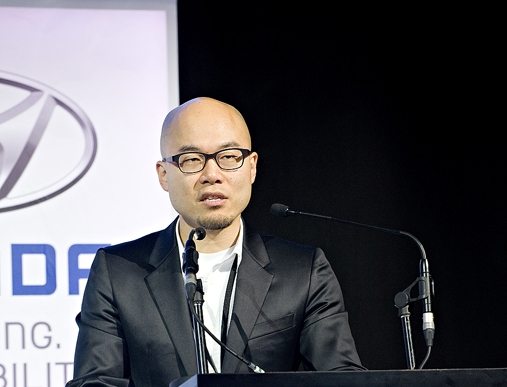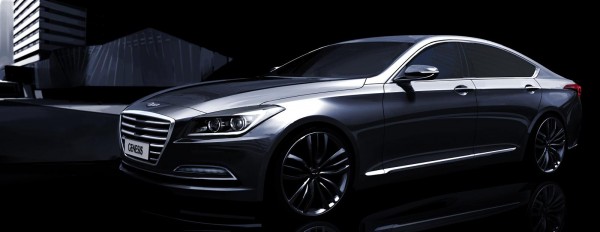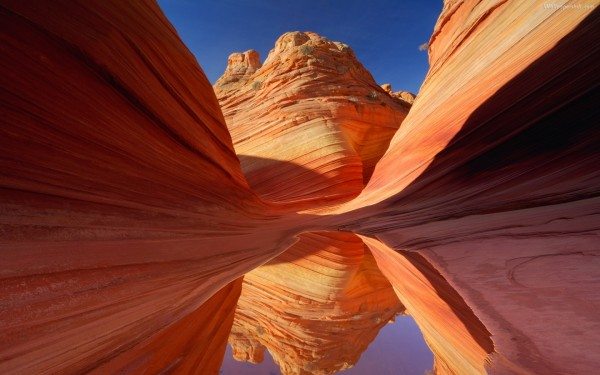The new Hyundai Elite i20 is an exponent of what you are terming as Fluidic Sculpture 2.0. Can you elaborate on what the version 2.0 encompasses?
As you all now, Hyundai’s Fluidic Sculpture design philosophy has been globally acclaimed and accepted. We took a strong design direction with this philosophy. Version 2.0 represents an evolution of the theme. The evolution of the design encompasses simplicity, ease of use, comfort, reliability, enhanced safety, high quality, style and will carry Hyundai’s brand image of Modern Premium. The all-new Elite i20 will be the first Hyundai to embody Fluidic Sculpture 2.0 in India.
In essence, the Fluidic Sculpture 2.0 encapsulates the trio of fluid aesthetics, modern appeal and a premium interior. Refined fluidic design focuses on a modern Hyundai look with a singular hexagonal grille, easy-to-understand and pleasant design and even sharper focus on materials and finishing of the car.
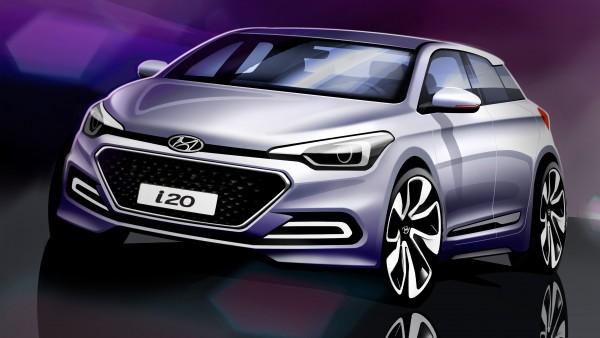
The fluidic design programme has been a great success for Hyundai. How do you plan to take this concept further?
The Fluidic Sculpture philosophy was conceived in 2007 by chairman Mr. M.K. Chung and the then chief designer, Mr. Oh Suk Geun. The leaders wanted to create a unique identity for Hyundai cars across the globe. Up until then, each car was designed individually and there was no common design platform which could unify them. Brought to life after an intense brainstorming session involving 300 Korean and 200 overseas designers, Fluidic Sculpture lent Hyundai its much needed design identity. All the cars ranging from the basic Eon to the feature packed Equus are connected via this common design link.
The “Fluidic” element is meant to evoke the organic flow of design found in nature. The second element, “Sculpture,” evokes the idea that Hyundai vehicles are much more than just sheet metal. They are artfully designed, exquisitely crafted pieces of sculpture. Also, each vehicle has its own design theme that informs specific product design underneath the umbrella of Fluidic Sculpture. For instance, Sonata sports the “orchid stroke ” while the Veloster has “carving ray” and the Azera is “grand glide” are some examples.
In future, Hyundai is strengthening it’s design fundamentals to ensure long- term competitiveness. Hence all future facelifts will use this Fluidic Sculpture refining them further and using the existing subsets and regional preferences.
How does the design team go about creating a new ‘Fluidic Sculpture’ concept? What inspires them, and how is the idea carried forward to the next level?
It all begins with the designer drawing some concept inspired by nature, bound roughly within the boundaries defined by the ethos of fluidic sculpture as mentioned above. They get their original ideas by observing certain natural entities. For example, a rock formation in Arizona, in the U.S., called Antelope Canyon is one of the structures where the designers draw their inspiration from. The idea is then refined and more strongly brought within the definition of Fluidic Sculpture with help from a team of seasoned designers.
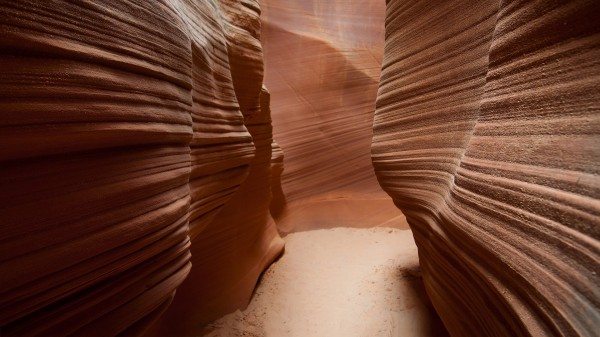
Apart from lending a car its visual appeal, fluidic sculpture has functional benefits too. For example, it helps reduce the coefficient of drag. This helps achieve better performance and reduce consumption. The Hyundai Sonata Hybrid, for example, designed with Fluidic Sculpture principles, has a Cd of just 0.25, among the lowest of any production car in the world.
What has been the reaction of specific markets across the globe to the fluidic sculpture design theme? How does the design team make the philosophy applicable to different markets?
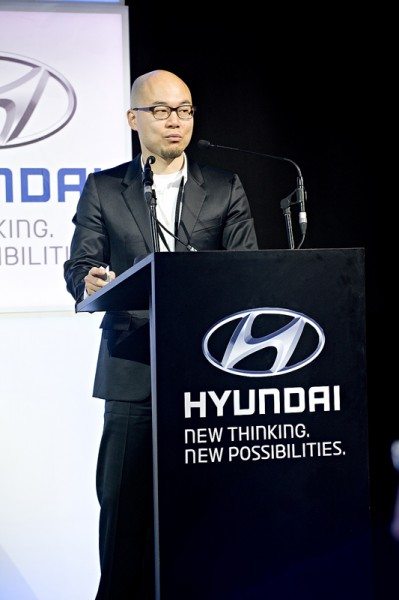
The response to the fluidic sculpture design philosophy has been very good worldwide. Since it’s a very well defined and unique design theme, it more often than not evokes strong opinion. There are people who have had their opinion against it, but on a broader scale, a vast majority appreciates it.
The design by itself may not be in tune with the tradition or norm in a specific market, but the inherent strengths of the concept makes it work more often than not. For instance, even though Sonata is a huge hit – especially in the U.S. – there are those who believe its design is over the top. However, such opinions notwithstanding, the design team ensures that the fluidic sculpture encompasses simplicity, ease of use, comfort, reliability and quality along with style.
Fluidic Sculpture concept will keep evolving with time, and we will ensure that it’s more and more relevant and suitable to a very wide range of audience.
How has the Fluidic Sculpture design adapted itself for the Indian market?
Hyundai strongly believes in creating products suitable to the regional markets. We set up our R&D centre in Hyderabad, which now has around 500 engineers working at the centre. This R&D center in Hyderabad works in tune with the global R&D centre in Korea, and feeds it with important India specific inputs. This helps us tweak our products to better suit the Indian market.
For example, while designing the India specific EON, the designers made several trips to India, traveling around, sketching and learning the forms of Indian architecture and design. The idea was not necessarily to create an EON that looked “Indian,” but to explore the possibility of incorporating the Indian form into EON.
So for instance, the gentle facing curves on either side of EON’s center console represent a form that our designers saw in India. Also, they designed EON to satisfy the practical needs of Indian drivers: they made bottle holders in the doors that hold a 0.7-liter water bottle, and they made a flat space in the middle of the dashboard, so drivers can affix their deities and charms.
A similar strategy was followed in Brazil too where Hyundai entered with HB20, a hatch back manufactured specially for Brazilian customers.
Apart from design, what’s happening at Hyundai in terms of future engines and transmissions?
Downsizing is the global buzzword in terms of engines, and Hyundai is also working on smaller, greener yet powerful engines. We are including the Turbo Gasoline Direct Injection (T-GDI) engines to our models. The T-GDI engine is a next-generation engine boasting great fuel economy, eco-friendliness and high performance. While its compact (1.6ℓ) and mid-size (2.0ℓ) models are already equipped with such engines, Hyundai will continue to develop ‘small, yet strong’ engines, which can offer drivers unprecedented driving pleasure.
In terms of diesel engines, Hyundai is further refining its existing U, R and S engines to respond to the diversified demands of global customers more effectively. Hyundai also aims to become the leader in transmission technology. As the first automaker to develop 8-speed auto transmission for the rear wheel drive vehicle in-house, Hyundai is focusing on developing transmissions for premium models as well.
Furthermore, Hyundai will offer more customized powertrains in response to local conditions to boost its overseas sales. For example, while Hyundai plans to increase the ratio of T-GDI engine-equipped models in its major markets including the U.S. and China, it also plans to introduce flex-fuel engines for countries better suited for them. For countries with extreme weather conditions, Hyundai will provide engines that deliver sustainable performance regardless of changes in temperature.

